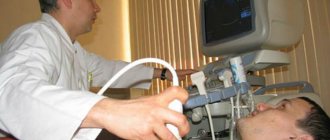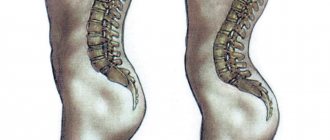Heart block is an abnormal heart rhythm in which the heart beats too slowly. Why is this happening and what to do? Let's find out together with the experts. Each heartbeat occurs in the heart's upper right chamber (atrium) in the sinus node, a bundle of specialized cells that act as the heart's natural pacemaker. When it beats, an electrical signal from the upper chambers goes to the lower chambers, which causes the heart to contract and pump blood. Heart block disrupts this normal rhythm.
Degrees of heart block in adults
Heart block can be first, second, or third degree, depending on the electrical signal abnormality.
First degree heart block. In this case, the electrical impulse still reaches the ventricles, but travels through the AV node more slowly than usual.
Second degree heart block. It is divided into two categories:
- Type I, also called Mobitz block I or Wenckebach AV block, is a less severe form of second-degree heart block in which the electrical signal on its way to the ventricles becomes slower and slower;
- type II, also known as Mobitz block II - in this case, some electrical signals do not reach the ventricles at all, and the heartbeat may be slower than usual.
Third degree heart block. In this embodiment, the electrical signal from the atria to the ventricles is completely blocked. To compensate, part of the ventricles acts as a pacemaker, creating electrical signals. These signals cause the heart to pump blood, but much more slowly than normal.
Main symptoms of bradycardia
The clinical picture of bradycardia disease corresponds to the changes in central hemodynamics that develop in this case. Characteristic signs for this pathology are revealed during the initial examination, i.e. during a patient interview. Already on the basis of the most characteristic complaints, a preliminary diagnosis can be made.
The frequency of certain symptoms and the most characteristic complaints depends on the severity of the disease, the severity of hemodynamic changes and the duration of the disease at the time of visiting a doctor.
The patient's age suggests a high probability of developing cardiac arrhythmias. The etiology of the disease may be an important factor in deciding whether pacemaker implantation is necessary.
Causes of heart block in adults
The most common cause of heart block is a heart attack.
Other causes include heart disease, problems with the structure of the heart (due to defects) and rheumatism. The blockage can also be caused by damage during open heart surgery, as a side effect of certain medications or exposure to toxins. Heart block can be congenital, but it is a rare pathology. The risk of heart block increases with age and the presence of heart disease.
First-degree heart block is common in well-trained athletes, teenagers, young adults, and people with a highly active vagus nerve.
Diagnostic capabilities
- ECG - allows you to detect bradycardia or transient SA and AV blockades at the time of treatment.
- 24-hour Holter monitoring is the most reliable method for diagnosing incoming heart rhythm disturbances per day of observation (continuous ECG recording).
- EchoCG - a decrease in the ejection fraction below 45%, an increase in the size and volume of the heart that arose against the background of bradycardia, indicates severe myocardial pathology.
- An X-ray examination of the chest allows one to assess the size of the heart shadow and identify signs of venous congestion in the lungs.
- Bicycle ergometry allows you to identify coronary artery disease and assess the adequate increase in heart rate contractions during physical activity.
- Transesophageal examination of the cardiac conduction system is carried out to confirm the diagnosis in cases where transient blockades cannot be detected by conventional methods (ECG, Holter monitoring), in the presence of clinical manifestations. In some cases, it allows one to verify the organic or functional etiology of cardiac arrhythmias.
to the top of the page
Diagnostics
First, the cardiologist will review the patient's medical history and ask questions about your general health, diet and activity level, and family medical history.
In addition, he will ask about the medications the patient is taking, as well as about bad habits. The doctor will then listen to your heart and check your pulse for signs of heart failure, such as fluid retention in your legs and feet.
In addition, to diagnose heart block, use:
- ECG – this will show the heart rate and rhythm, as well as the timing of electrical signals as they pass through the heart;
- A Holter monitor is a portable ECG that is attached to the patient’s body and records heart activity from 24 to 48 hours;
- An event monitor is another type of portable ECG that is worn over an extended period, where the device records heart activity at specific times rather than continuously;
- Electrophysiology test - This test uses thin flexible wires (catheters) that are placed on the surface of the heart to record its electrical activity.
Causes of bradycardia
The cause of bradycardia is changes in the conduction system of the heart that disrupt the propagation of the electrical impulse from the sinus node, causing the heart to contract. Such disorders can be caused by any processes that lead to changes in the heart muscle - myocarditis, atherosclerosis of the coronary vessels leading to coronary heart disease, cardiosclerosis, post-infarction scars, etc.
Risk factors for the disease include:
- diseases of the cardiovascular system, including inflammatory processes
- congenital anomalies
- disorders of the central nervous system
- increased intracranial pressure
Minor and intermittent bradycardia occurs, for example, when wearing a tightly tied tie or other pressure on the carotid artery, since in this case the blood supply to the brain is disrupted and, as a result, feedback to the heart.
In addition, due to pressure on the thyroid gland, temporary dysfunction may occur, namely, a slowdown in the release of hormones, of which, in particular, thyrioedin is directly responsible for the heart rate.
All cases of bradycardia can be divided into 3 groups:
- toxic bradycardia,
- bradycardia of central origin and
- bradycardia of mechanical and degenerative origin
Toxic bradycardia occurs from exposure to the sinus and atrioventricular nodes of so-called cardiac poisons, such as. digitalis, pilocarpine, morphine, muscarine, nicotine, chloroform, chloral hydrate, etc.
Bradycardia of central origin is observed with meningitis, tumors and hemorrhages in the medulla oblongata, increased intracranial pressure, etc.
A slowing of the heartbeat appears reflexively in many diseases of the abdominal cavity and when sensitive receptors on the skin are irritated.
The largest group of slow heartbeats consists of bradycardias of mechanical and degenerative origin. These include cases of bradycardia in diseases of the heart muscle, fatty degeneration of the heart, sclerosis of the coronary arteries, exudative pericarditis, hereditary heart defects, the aging process, the formation of scar tissue changes after myocardial infarction, infectious diseases; and also for unknown reasons.
Bradycardia is usually caused by damage to the sinus node (sick node syndrome) or diseases of the conduction system of the heart (heart block).
B>Sick sinus syndrome (sinus node disease). In these cases, the impulses in the sinus node are significantly reduced and do not meet the needs.
- sinus bradycardia (normal but very infrequent heartbeats)
- sinus node failure (the source of electrical impulses that causes the heart to contract has stopped working)
- SA (sinoatrial) block (impulses are generated, but cannot exit the sinus node) in the presence of symptoms of circulatory failure
Heart block (atrioventricular conduction disorders)
- in this case, either not all excitation impulses of the sinus node reach the ventricles of the heart (incomplete AV block), or they do not pass at all and the atria and ventricles contract independently of each other.
Heart block can occur in the atrioventricular (atrioventricular) node or conducting tissues.
- 1st degree AV block if the patient has clinically significant symptoms (see below) and electrophysiological examination shows that the lesion is located at the very inferior part of the AV junction
- 2nd degree AV block, type 1 – in the presence of symptoms such as weakness, fatigue, dizziness, lightheadedness, syncope
- 2nd degree and 3rd degree AV block are indications for pacing, regardless of symptoms (poor prognosis)
Weakened cardiac function is insufficient to pump the required amount of blood through the circulatory system. The first organ to respond to a lack of blood is the very sensitive brain. Due to insufficient oxygen supply, you may feel dizzy, weak, tired, slow, suddenly short of breath, and even lose consciousness.
In these cases, an artificial pacemaker is used - a pacemaker that can stimulate the heart with electrical impulses. This device sets the heart a constant and adequate rhythm, causing the heart muscle to contract rhythmically. Thus, blood circulation and the supply of oxygen and nutrients to the body are normalized.
to the top of the page
Popular questions and answers
Cardiologist Stanislav Snikhovsky answered our questions about heart block.
What complications can occur with heart block?
Clinically, all heart blocks are manifested by slowing of the pulse.
When the pulse rate decreases, fainting conditions associated with a lack of blood circulation to the brain may develop. Patients may complain of irregular heartbeat, headache and shortness of breath. With complete heart block (pulse about 40 beats per minute or less), Morgagni-Edams-Stokes syndrome develops, which is manifested by convulsions and loss of consciousness. Complete heart block causes rapid development of heart failure and can be fatal.
When to call a doctor at home if you have a heart block?
If there is sudden general weakness or fainting, a rare (less than 50 beats per minute) or very weak pulse, a feeling of irregular heartbeat, sudden shortness of breath and a feeling of lack of air, you should immediately call an ambulance.
Treatment
Treatment of SA (SA, sinoatrial, sinoauricular) blockade of 1, 2, 3 degrees and treatment of AV (AV, atrioventricular) block of 1, 2, 3 degrees is the same - implantation of an electrical pacemaker (pacemaker). A pacemaker is a minicomputer that regulates the heart and prevents it from stopping.
Do not wait for fatal complications, if you have symptoms of bradycardia, consult a doctor today, tomorrow may be too late. Take care of your health and the health of your loved ones.
Online consultations (Skype, Viber, Whats App)
Sign up for a consultation
Basic methods for diagnosing cardiac conduction disorders
1. ECG (electrocardiogram)
A standard 12-lead ECG at rest can identify all the main types of cardiac conduction disorders: sinoatrial and atrioventricular block, bundle branch block. Drug tests in combination with ECG are almost never used at present.
2. Holter monitoring (monitoring) ECG
This type of study allows you to record an ECG for a day or more. It allows you to determine whether the patient has significant pauses (cardiac arrest). Pauses longer than 3 seconds are considered significant. If there are no significant pauses, installation of a pacemaker is almost never indicated.
3. Electrophysiological study of the heart (EPS)
This is the most reliable, but complex and expensive method for diagnosing arrhythmias. EPI is performed only in a hospital and requires the installation of several catheters in the veins of the arms and legs. Electrodes are inserted into the heart through these catheters and cardiac stimulation is performed—arrhythmias are caused and eliminated, and their parameters are examined.
To detect the most common types of cardiac conduction disorders, there is a simpler type of EPI - transesophageal EPI. In this case, a thin wire (probe-electrode) is inserted through the mouth or nose into the esophagus and the left atrium is stimulated through it. This type of study is performed on an outpatient basis. In particular, transesophageal EPI makes it possible to determine how long after cessation of stimulation the function of the sinus node (that is, its own pacemaker) is restored - this is necessary in order to make a diagnosis of sick sinus syndrome, one of the most common types of conduction disorders in the elderly.
Complete AV block.
The atria and ventricles are excited independently of each other. The frequency of contractions of the atria exceeds the frequency of contractions of the ventricles. Same PP intervals and same RR intervals, PQ intervals vary. Causes: complete AV block can be congenital. An acquired form of complete AV block occurs with myocardial infarction, isolated disease of the cardiac conduction system (Lenegra's disease), aortic defects, taking certain medications (cardiac glycosides, quinidine, procainamide), endocarditis, Lyme disease, hyperkalemia, infiltrative diseases (amyloidosis, sarcoidosis ), collagenosis, trauma, rheumatic attack. Impulse conduction blockade is possible at the level of the AV node (for example, with congenital complete AV block with narrow QRS complexes), the His bundle, or the distal fibers of the His-Purkinje system.
Treatment
— permanent “electrocardiostimulation” (ECS). If the causes of blockade are reversible (for example, hyperkalemia), if blockade occurs in the early postoperative period or with lower myocardial infarction, temporary pacemaker is limited.
Congenital complete
AV blockade is accompanied by a stable replacement AV nodal rhythm, usually does not cause hemodynamic disturbances, is well tolerated and does not require pacemaker. Tactics while awaiting pacemaker implantation depend on the type of replacement rhythm and its stability.
For hemodynamically significant bradyarrhythmias
- constant ECS. With dual-chamber and atrial pacemaker, the risk of stroke is significantly lower than with ventricular pacemaker
to the top of the page
Degrees and their symptoms
Heart blocks are classified not only by the place of its development, but also by the degree of severity, which reflects the danger of the disease to human health and approaches to treating a particular stage of heart block. There are three main stages of heart block
First degree heart block
The first degree is the mildest form of manifestation. There is a delay of a fraction of a second in the time required for electrical impulses to travel through the atrioventricular junction. Complete blocking does not occur and the impulses reach the desired point.
First-degree heart block usually does not cause any noticeable symptoms and is diagnosed by examining other medical conditions in the person. Treatment may be limited to eliminating risk factors that affect heart health.
Second degree heart block
As the second degree develops, there is a series of increasing delays in the time it takes for the atrioventricular junction to conduct an impulse into the ventricles until the heart beat is missed. Partial blocking of impulses is possible.
The second degree is divided into 2 types:
- The first type of Mobitz. This is a less serious type of second-degree heart block. Characterized by slow conduction of impulses. May cause symptoms of mild dizziness and weakness. Usually does not require treatment.
- Mobitz's second type. Electrical signals reach the ventricles slowly or may be completely blocked. This type of heart block can often progress to third degree heart block. May cause symptoms of dizziness and fainting, accompanied by bradycardia. Requires medical consultation and full treatment.
Third degree heart block
Third degree heart block is the most dangerous degree for a person’s health and life and requires immediate medical attention. It is characterized by complete blocking of the transmission of electrical impulses from the atria to the ventricles due to the lack of communication between the atrioventricular junction and the ventricles.
In this case, the ventricles can partially take over the function of a pacemaker, but they are not able to ensure full functioning of the heart.
Third degree blocks can be congenital or acquired as a result of other heart diseases or injuries.
Symptoms include:
- shortness of breath;
- weakness;
- fainting conditions;
- chest pain;
- pale skin, spots;
- arrhythmia.
Many cases of third-degree congenital heart block are diagnosed during pregnancy because ultrasound scans can often determine whether the baby has bradycardia.
Important! If the diagnosis is missed during pregnancy, symptoms of third-degree congenital heart block usually do not appear until the baby is older and his heart is more developed.
Prevention
- Elimination of cardiac pathology.
- Exclusion of extracardiac factors of arrhythmia or blockade (intoxication, autonomic dysfunction, stress, etc.).
- Limit intake of caffeine-containing products and alcohol.
We will help make a diagnosis at an early stage of the development of blockade, tachycardia or other disorders and provide timely treatment for cardiac arrhythmia. Further observation will allow maintaining a good quality of life. For questions regarding the treatment of cardiac arrhythmia in Moscow, please contact us by dialing the number +7.








